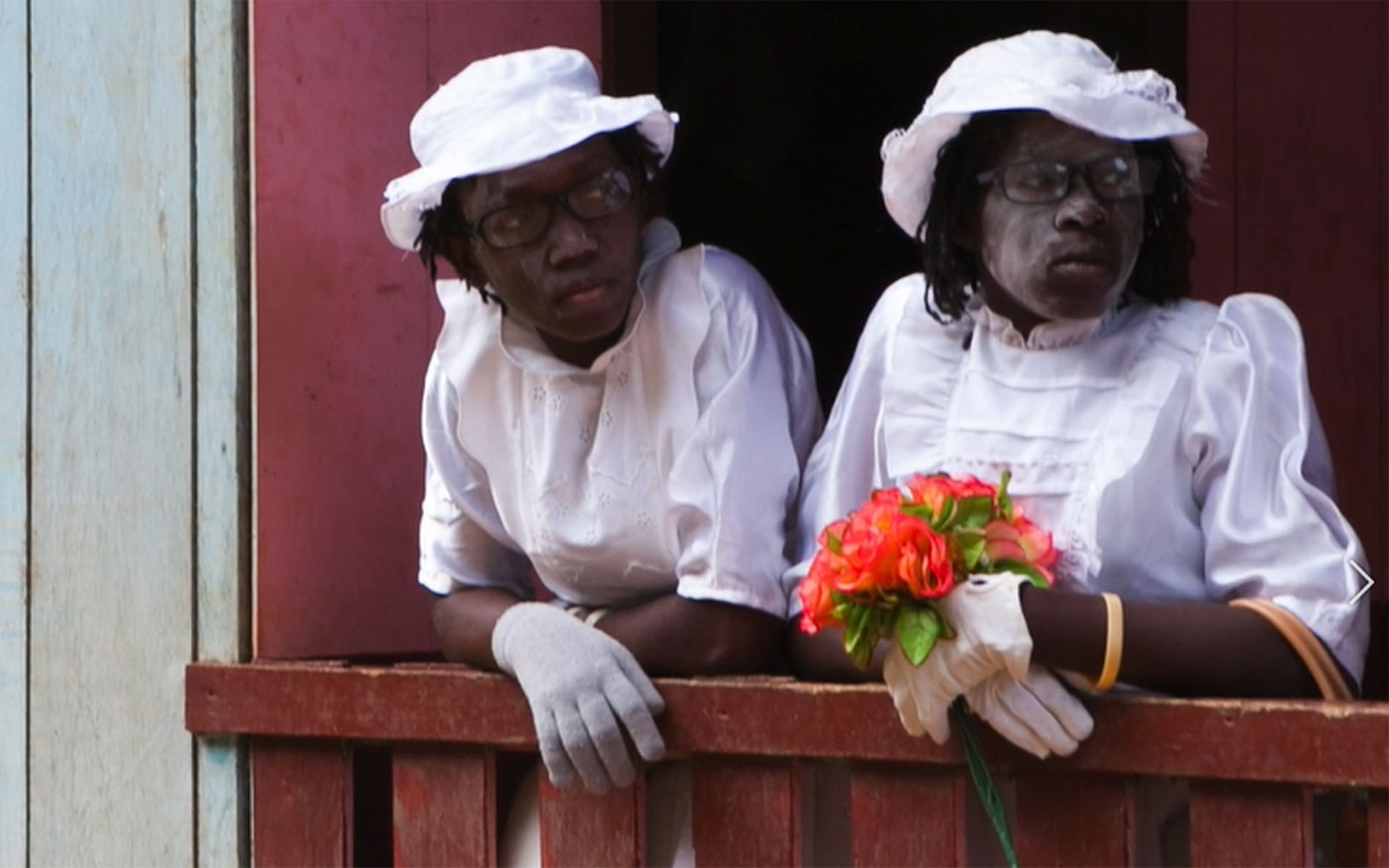Tchiloli: the role of women

The staging of Tchiloli – based on The Tragedy of the Emperor Charlemagne and the Marquess of Mantua, in São Tomé – as well as The Act of Floripes, in Príncipe, are both emblematic examples of cultural creolization and syncretic theatre. According to the medieval tradition that is still followed today, it is exclusively up to men to play the role of every character of these stories, even those of women.
What role, then, do women play in this tradition? Some will stay home, looking after their children during the show. Others take part in it offstage, by helping the men dressing up or by bringing them water; and a few of them play instruments like the bell or the rattle. This is the theme of the second episode about Tchiloli, a documentary series directed by Inês Gonçalves.
With a tradition of more than 500 years, Tchiloli stages a story involving death and betrayal, passions and moral conflicts capable of thrilling both the audience and the actors, where music, movement and the body come together in a surprising expression of African art and culture. It has been supported several times by the Calouste Gulbenkian Foundation. Since January 2019, it is supported through the project “(Re)Criar o Bairro”, led by the ONGD “Leigos para o Desenvolvimento”, that aims to highlight the products associated with the cultural heritage of Bairro da Boa Morte, in São Tomé, through visual and performative arts and also technology.
More info
Despite that stated by the interviewees, there is no known documented evidence in support of the affirmation that Tchiloli has existed in Sao Tome ever since the 16th century.
